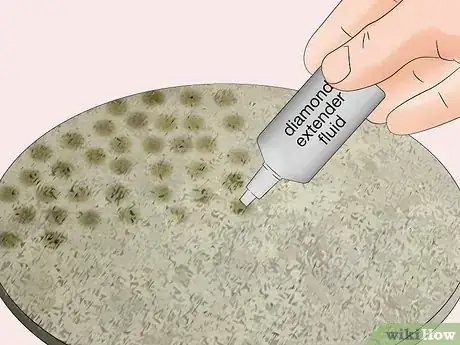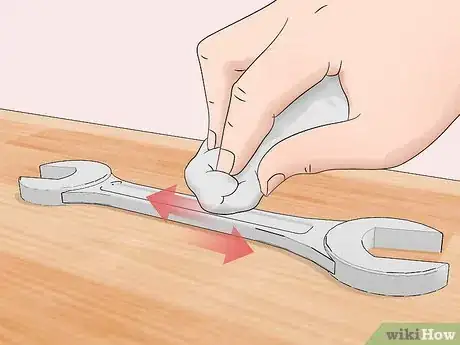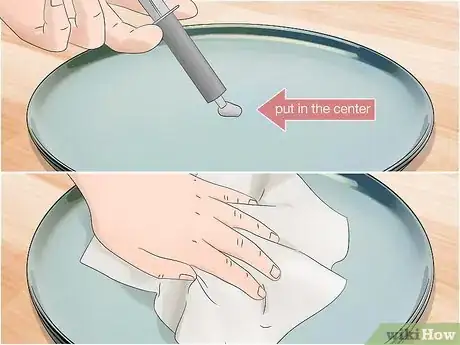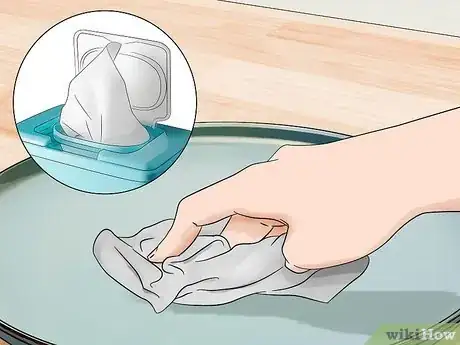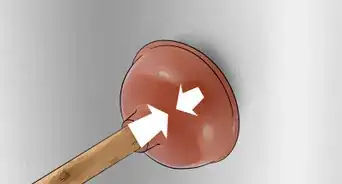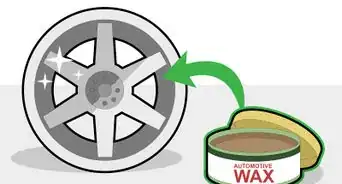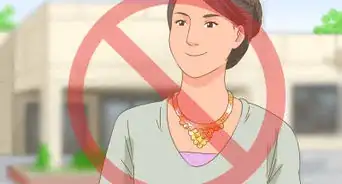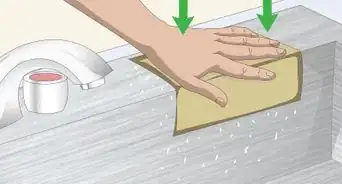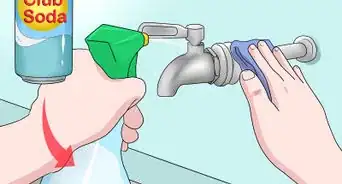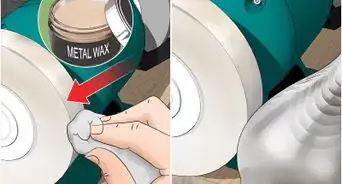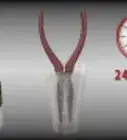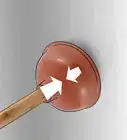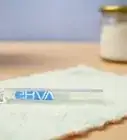This article was co-authored by wikiHow staff writer, Janice Tieperman. Janice is a professional and creative writer who has worked at wikiHow since 2019. With both a B.A. and M.A. in English from East Stroudsburg University, she has a passion for writing a wide variety of content for anyone and everyone. In her free time, you can find her working on a new crochet pattern, listening to true crime podcasts, or tackling a new creative writing project.
There are 12 references cited in this article, which can be found at the bottom of the page.
This article has been viewed 13,222 times.
Learn more...
Diamond paste may sound luxurious, but it’s a pretty common polishing paste that can be used with a variety of materials, ranging from steel to precious gems. Unlike other polishes, diamond paste is typically packaged in syringes and is color-coded by grit. With an hour or 2 of hard work, you can polish metal, ceramics, opal, and a variety of other surfaces.[1]
Steps
Buffing with Coarse Diamond Paste
-
1Cover the surface with dots of diamond extender fluid. Check online or visit your local hardware store for diamond extender fluid. Remove the cap and squeeze multiple drops over the surface of your project, like a polishing wheel or piece of steel. Like the name suggests, this product helps your diamond paste finish last longer.[2]
- Unless you use diamond polish on a regular basis, you only need a small, 2 fl oz (59 mL) bottle for this.
- If you’re working with precious stones like opals, you may not need to worry about this.
-
2Squeeze a pea-sized amount of diamond paste onto the project. Take your syringe of diamond paste and lightly press the plunger to spread the product around. Don’t squeeze out too much at first—with diamond paste, a little can go a long way! You can always use more if you need it.[3]
- When working with diamond paste, you usually start with a coarse paste grit, like 20 to 40 microns. As you buff your project, you’ll eventually transition to a finer-grit pastes.
- If you’re working with something really small, like an opal, you may want to use a felt buff tip and a rotary tool to apply the paste.[4]
- For instance, if you’re working with a steel surface, you may want to start with 20 microns and make your way down to 1 micron.[5]
Advertisement -
3Rub the paste into the surface with a cloth. Take a cloth and work over the diamond paste in consistent, back and forth motions. Try to cover as much of the surface as possible. Continue buffing until you’ve coated the entire surface with polish.[6]
-
4Wipe down the surface with a baby wipe to remove any residue. Clean off the entire surface until it’s totally free of leftover residue. This helps prevent any contamination when you start to apply other diamond pastes to your project. You may want to have a canister of wipes on hand since you’ll be working with a variety of different pastes.[9]
- Baby wipes are great for cleaning up diamond paste residue from any project! You can find them online or at most grocery stores.
Finishing with a Finer Paste
-
1Buff a pea-sized amount of a finer-grit diamond paste on the surface. Try to spread the paste around the center of your project, then rub it in with a cloth. Continue buffing the surface until you’ve polished and rubbed the entire surface.[10]
- By the time you finish, there shouldn’t be much visible paste on your project.
-
2Clean off any excess with a baby wipe. Take another baby wipe and clear away any leftover residue from the diamond paste. Keep wiping until the surface looks and feels smooth.[11]
-
3Repeat this process with additional finer-grit diamond pastes. Squeeze a pea-sized amount of each new, finer paste onto the surface of your project, then rub it in with a clean cloth. Wipe down the surface with a baby wipe and repeat the process all over again until you’ve used your finest diamond paste.[12]
- You’ll probably have to repeat this process at least 3 times.
- For instance, if you’re polishing a section of steel, you may want to use a 20 micron paste, then switch to 7 and 1 micron pastes, respectively.
- Check your diamond paste kit for any further instructions and recommendations regarding specific projects.
Alternative for Buffing Gems
For really small items, like opals, you may want to use a felt buff tip and a rotary tool when you go to polish. Cover the tip with diamond paste, then buff over the surface of the gem at a really low spin speed for about 1 minute. Wipe off the surface with a baby wipe, then switch to a new felt buff tip coated with a finer paste. As a general rule of thumb, polish your gems with 10, 7, 6, 3.5, 2.5, 1.5, 1, and 0.5 micron pastes.[13]
Warnings
- For your own safety, you may want to wear eye glasses and protective gloves whenever you work with diamond paste.⧼thumbs_response⧽
Things You’ll Need
- Diamond extender fluid
- Plastic gloves
- Diamond paste, multiple grits
- Cloth
- Baby wipes
- Sturdy cloth (optional)
- Rotary tool (optional)
- Felt buff tips (optional)
References
- ↑ https://www.microtonano.com/Micro-Tec-diamond-polishing-paste-metal-ceramics-polishing-cleaning.php
- ↑ https://m.youtube.com/watch?v=H3V5_zMZnN4&t=2m59s
- ↑ https://m.youtube.com/watch?v=6_GwEPALtnU&t=4m36s
- ↑ https://m.youtube.com/watch?v=hMD0Vt61YRQ&t=3m49s
- ↑ https://m.youtube.com/watch?v=SWvOzXF7dBc&t=5m7s
- ↑ https://m.youtube.com/watch?v=6_GwEPALtnU&t=5m1s
- ↑ https://www.asminternational.org/documents/10192/3447544/06958G_Chapter_4.pdf/a6cda448-291f-491b-bf6f-456322c4e386
- ↑ https://m.youtube.com/watch?v=hMD0Vt61YRQ&9m36s
- ↑ https://m.youtube.com/watch?v=hMD0Vt61YRQ&t=8m46s
